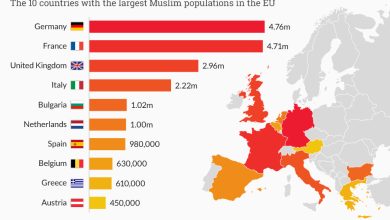The population of Dakahlia Governorate, situated in the Nile Delta region of Egypt, has been a subject of significant interest due to its size and demographic characteristics. As of the most recent data available, Dakahlia is one of the most densely populated governorates in Egypt.
Geographic and Administrative Overview
Dakahlia Governorate is located in the northern part of Egypt, bordered by the Mediterranean Sea to the north, and neighboring governorates such as Kafr El Sheikh to the northwest, Gharbia to the west, and Sharqia to the east. The capital of the governorate is Mansoura, a city of considerable historical and cultural importance.
The governorate covers an area of approximately 3,454 square kilometers. This region is characterized by its agricultural productivity, being situated in the fertile Nile Delta, which supports a significant portion of Egypt’s agricultural output.
Population Statistics
As of the latest estimates, the population of Dakahlia Governorate is approximately 7.5 million people. This figure reflects a substantial demographic concentration within the region, making it one of the most populated governorates in Egypt. The population density in Dakahlia is high, with a large proportion of the inhabitants residing in urban areas, particularly in and around the capital city, Mansoura.
The governorate’s population growth has been influenced by various factors, including migration patterns, birth rates, and economic opportunities. Mansoura, as the central urban hub, attracts a significant number of people from surrounding rural areas and other governorates seeking employment and educational opportunities.
Demographic and Socioeconomic Characteristics
The population of Dakahlia is diverse, comprising various age groups and social strata. The demographic profile includes a substantial proportion of young people, which reflects the broader trends observed across Egypt. Educational institutions, including universities and technical schools, contribute to a relatively high literacy rate in the governorate.
Economically, Dakahlia’s residents are engaged in a range of activities. Agriculture remains a cornerstone of the local economy, with the region’s fertile land supporting the cultivation of crops such as rice, wheat, and cotton. Additionally, industries related to food processing and textiles also play a significant role in the local economy.
The governorate’s urban areas, particularly Mansoura, offer a range of services and amenities, including healthcare, education, and recreational facilities. This urban infrastructure supports the well-being of the population and contributes to the overall quality of life in the region.
Urbanization and Development
Urbanization in Dakahlia has been a notable trend over recent decades. Mansoura, as the governorate’s principal city, has seen considerable development, with expanding residential, commercial, and industrial areas. This growth has been accompanied by efforts to improve infrastructure, such as transportation networks, healthcare facilities, and educational institutions.
The expansion of urban areas has also led to challenges related to housing, traffic congestion, and environmental sustainability. The local government has been involved in various initiatives to address these issues, aiming to enhance living conditions while promoting balanced development across the governorate.
Social and Cultural Aspects
Dakahlia is rich in cultural heritage, with historical sites and traditions that reflect the region’s long history. The governorate’s cultural life is vibrant, featuring a blend of traditional practices and modern influences. Festivals, cultural events, and local crafts contribute to the region’s cultural landscape.
The social fabric of Dakahlia is characterized by strong community ties and family networks. Social institutions, including religious organizations and community centers, play a significant role in the daily lives of residents. The cultural diversity within the governorate is also reflected in its cuisine, customs, and artistic expressions.
Future Prospects
Looking ahead, Dakahlia faces both opportunities and challenges. The region’s demographic trends, economic development, and urbanization will continue to shape its future. Efforts to improve infrastructure, enhance educational and healthcare services, and promote sustainable development are likely to be central to the governorate’s ongoing progress.
Strategic planning and investment in various sectors will be crucial for managing population growth and ensuring that the benefits of development are distributed equitably across the governorate. The role of local governance and community participation will be vital in addressing emerging issues and fostering a prosperous future for Dakahlia.
In summary, Dakahlia Governorate is a significant demographic and economic region within Egypt. Its population dynamics, coupled with its agricultural and industrial contributions, play a critical role in the broader context of the country’s development. The governorate’s ongoing efforts to balance growth with sustainability will be key to its future success.




